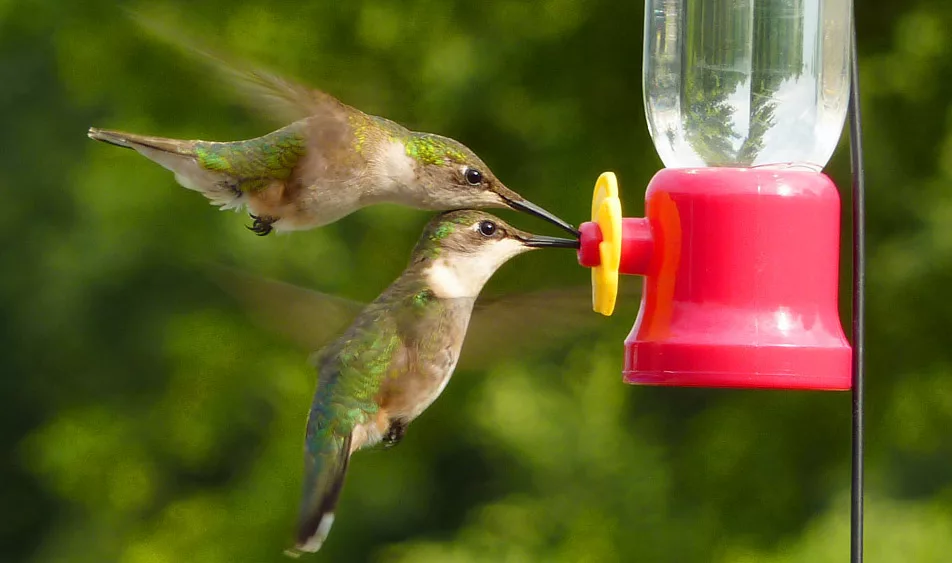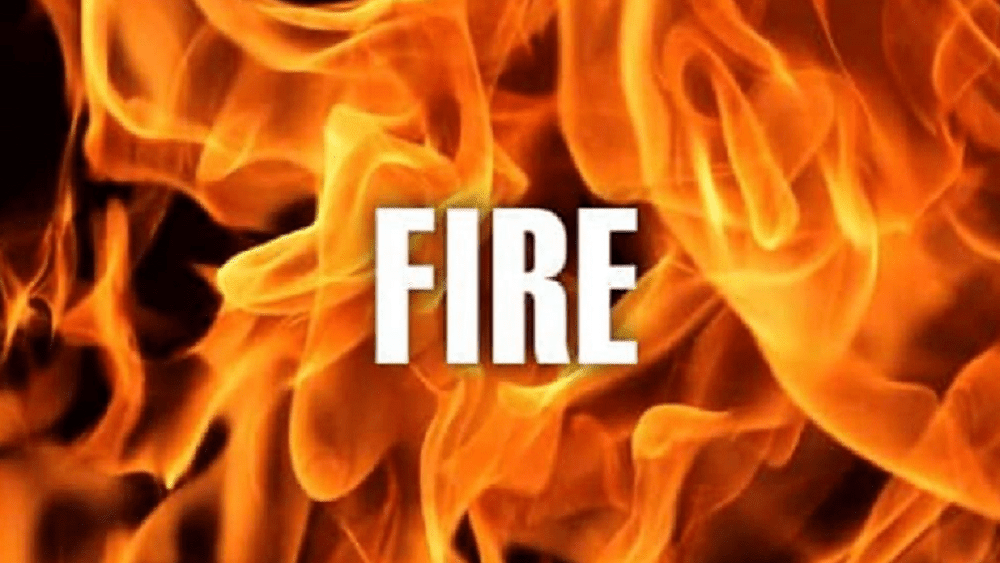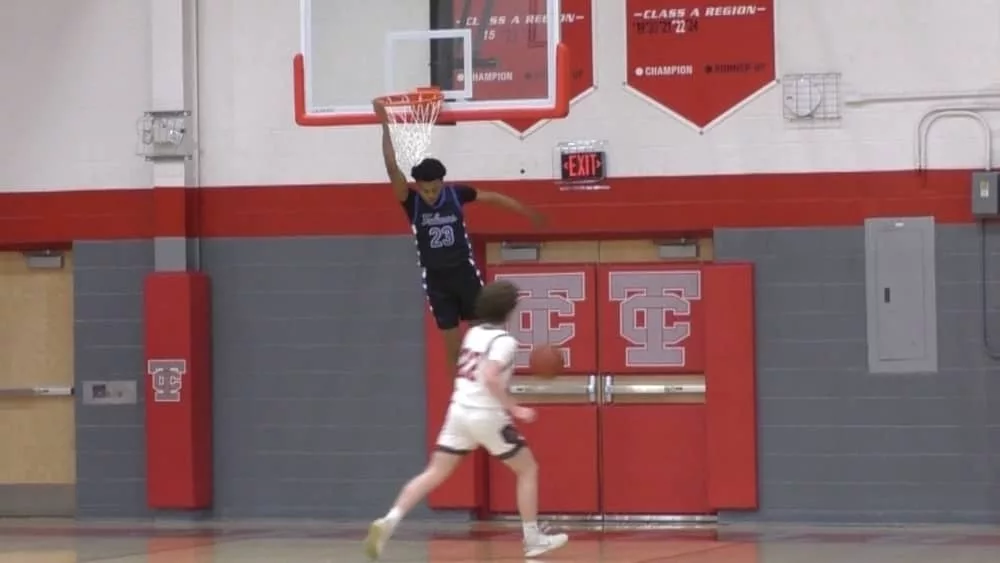Worldwide there are nearly 330 species of hummingbirds, but here in Kentucky there is only one. The ruby-throated hummingbird is the only species regularly found east of the Mississippi River. The male is easy to recognize by its emerald-green back, white breast, and brilliant red throat. The female is similar in coloring, but lacking the red throat. This species is only 4 inches long and weighs less than 0.2 ounces. The amazing thing about the ruby-throated hummingbird is that each fall it migrates from the eastern United States, 600 miles nonstop, across the Gulf of Mexico, to Central America. In the spring they make the return trip, arriving at your backdoor from March to April.
Hummingbirds build tiny nests (about the size of half a walnut shell) on the small limbs of trees and shrubs, 5 to 20 feet above the ground. Nests are often located above open areas, a trail, or water and may be sheltered from above by overhanging branches. Females will often return to the same nesting spot each year, reusing the old nest when possible. In our area nests can most often be found in pine trees and constructed from the down of dandelions and thistle, attached to the limbs with spider webs and covered with lichens. Eggs are white and about the size of a black-eyed pea. Although finding a nest is a treat, remember that it is a violation of Federal law to possess bird feathers and nests.
Hummingbirds’ hovering ability, long beaks, and long tongues make them especially adapted for eating nectar from flowers. Along with nectar, hummingbirds will feed on small insects, spiders, and occasionally sap from trees with holes drilled by woodpeckers. Most of the water they require comes from the nectar they eat. They will also drink the water from leaf surfaces after a rain. Placing a misting fountain in your yard will serve as a hummingbird attraction since they like to bathe by flying through the fine mist.

Hummingbirds’ natural diet can also be supplemented with feeders. You will have best success with feeders if you first place them near large clusters of flowers early in the season. Once the birds are using the feeder, you can gradually move it to almost any location, such as in front of a window. Select a feeder that’s easy to clean and holds enough nectar for 3 to 4 days. You can purchase nectar solutions for your hummingbirds or make your own. To make your own, mix 1 part sugar to 4 parts water. Bring the water to a boil and pour over the sugar. Stir the solution and let it cool to room temperature. Extra nectar can be stored in the refrigerator. Never make the nectar solution from honey, because fermented honey can cause a fungal disease fatal to hummingbirds. It is also unnecessary to add red dye to the solution; a feeder with red markings is sufficient.
Replace the nectar solution in your feeder every 3 to 5 days, washing the feeder with soapy water between refills. Use a weak bleach solution to clean and sterilize the feeder monthly. You can leave your feeder out from the day the first flowers bloom in the spring until the birds quit using them in the fall. The misconception that leaving feeders out too late can keep hummingbirds from migrating is unfounded. Day length, not food availability, is what triggers the birds to migrate. Some common problems with feeders include aggressive males and insect pests. Use multiple feeders just out of sight of each other to keep feeder-hogging males from guarding them all.
To prevent ants or yellow jackets from coming to the feeder, keep the outside clean of nectar spills and, if needed, coat the feeder hanger or the areas around feeding holes with cooking oil or petroleum jelly. Some feeders have bee guards which may prove helpful in deterring bees and other pests.
Although feeders are effective, they do require a lot of attention. Another option to consider is developing your landscape for hummingbirds. Planting certain perennials, vine and shrubs that bloom throughout the season will attract large numbers of birds while adding color to your garden all year. Hummingbirds are generally attracted to flowers that are red, orange, or pink and tubular in shape. The list below will give you a few ideas on what to plant. Have fun attracting those hummingbirds.
Herbaceous Plants: Bee Balm; Butterfly Weed; Columbine; Coral Bells; Gladiolus; Hosta; Petunia; Phlox; Scarlet Sage
Vines: Morning Glory; Scarlet Runner Bean; Trumpet Creeper; Trumpet Honeysuckle
Shrubs: Azalea; Butterfly Bush; Coralberry; Lilac; Rose of Sharon; Weigela
Trees: Apple; Eastern Redbud; Flowering Crabapple; Hawthorn; Horse Chestnut; Tulip Poplar
— Kelly Jackson, Christian County Extension Agent






